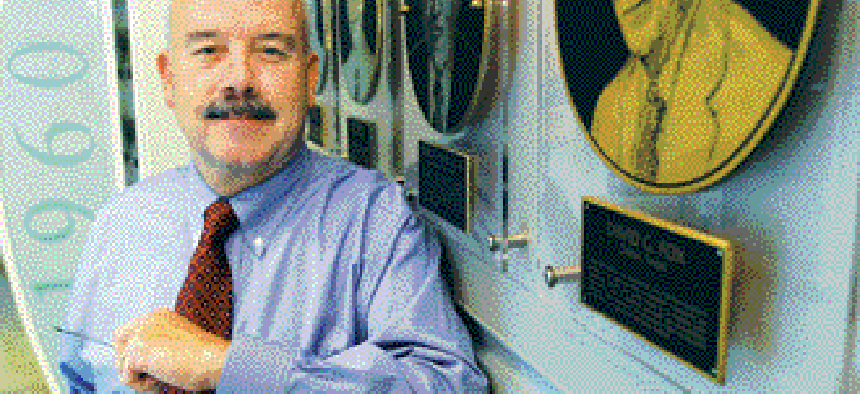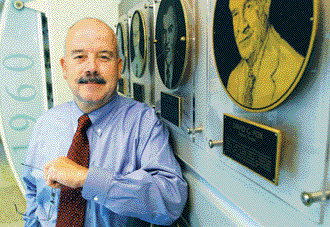Terrance Gainer | Survival Guide: Perspectives from the field

A key part of Terrance Gainer's job as director of emergency preparedness for the Nonprofit Roundtable of Greater Washington is to get non-profit organizations?hospitals, schools, charities and advocacy groups?in the Washington region working with local government.
Why does the Nonprofit Roundtable for Greater Washington need an emergency preparedness director? The role of non-profits in the National Capital Region is tremendous. Just in the District of Columbia, there are 3,500 non-profits, and in the greater region there are more than 7,000. They employ about 12,000 people, and they control $60 billion in assets. They play a huge role in long-term recovery issues and mitigation and prevention. What best practices are you helping them develop? It's almost too early in my tenure to say I have helped them develop any yet. Long-term recovery is one of the key ones. When I came onboard, the non-profit community through the Metropolitan Washington Council of Governments made me the chair of the long-term community recovery plan. The group's goal is to have a strategic plan in place by the end of December. What is the roundtable doing to promote protection of critical infrastructure in the capital region? They need to have their own continuity of operations plan. They have to be able to survive and do business after a catastrophe. They have to properly use technology to do it. And most of them are behind on that. Once we get that up to speed, then we will talk about whether we will have a "human services command center." There are command centers to take care of the planes and missiles and police and fire, but what about all of the social services agencies? What are some of the technology gaps in emergency preparedness, and how might these gaps be filled? One big question that appears to be unanswered is service coordination. That is purely a technology issue. In Washington, for instance, there are some non-profits working with youth, some with jobs, some with housing, some with drug abuse, some with HIV. Thousands of non-profits are operating in silos. The way you get them out of silos is to get them to acknowledge there is a collaborative way to do things. How do you accomplish that? Really, the only way you can tie all of these organizations together is through technology, through shared information while maintaining confidentially. It's like having an Airborne Warning and Control System in the sky for human services. There are a lot of [agencies and organizations] that have been laboring long hours on individual problems. But they are not approaching it collectively. And technology has got to be the answer to that. If we can link planes in the skies, soldiers on the ground, and ships and submarines at sea so that they have a common vision of the battlefield, then there is no reason that we can't do that in the social services area. What did federal, state and local officials learn about response to large-scale disasters from the Hurricane Katrina experience? The value of coordinated response. They have to philosophically believe they should be talking together, and then they have to do it. What are the long-term goals of the non-profit community? First, to have a viable strategic plan to show which way the nonprofits are going. Second, to coordinate services. Third, to help government, business and the public understand what role the non-profits play in their daily lives and in emergency situations. Without the first and the second, we are doomed to the tyranny of the immediate, and we won't have a big-picture solution.
 When it comes to emergency preparedness, Terrance Gainer wants to get everyone on the same page. A key part of his job as director of emergency preparedness for the Nonprofit Roundtable of Greater Washington is to get non-profit organizations, such as hospitals, schools, charities and advocacy groups, in the Washington region working with local government. If another catastrophic incident such as Sept. 11, 2001, hits the region, the public and private sectors need to bring a synchronized, coordinated response.
When it comes to emergency preparedness, Terrance Gainer wants to get everyone on the same page. A key part of his job as director of emergency preparedness for the Nonprofit Roundtable of Greater Washington is to get non-profit organizations, such as hospitals, schools, charities and advocacy groups, in the Washington region working with local government. If another catastrophic incident such as Sept. 11, 2001, hits the region, the public and private sectors need to bring a synchronized, coordinated response.
With degrees in both law and sociology, Gainer was executive assistant chief of the Washington Metropolitan Police Department from 1998 to 2002. From 2002 to 2006, he was police chief of the U.S. Capitol Police. Gainer, who started his new job April 24, spoke with Deputy Editor William Welsh about his work helping the group develop a strategic plan for disaster recovery and business continuity.
WT:
Gainer:
WT:
Gainer:
WT:
Gainer:
WT:
Gainer:
WT:
Gainer:
WT:
Gainer:
WT:
Gainer:

Terrance Gainer, Nonprofit Roundtable for Greater Washington
Rick Steele
With degrees in both law and sociology, Gainer was executive assistant chief of the Washington Metropolitan Police Department from 1998 to 2002. From 2002 to 2006, he was police chief of the U.S. Capitol Police. Gainer, who started his new job April 24, spoke with Deputy Editor William Welsh about his work helping the group develop a strategic plan for disaster recovery and business continuity.
WT:
Gainer:
WT:
Gainer:
WT:
Gainer:
WT:
Gainer:
WT:
Gainer:
WT:
Gainer:
WT:
Gainer:

